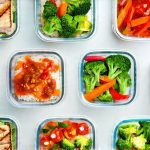Living with an overactive bladder (OAB) or interstitial cystitis (IC) can significantly impact daily life, often requiring careful consideration of dietary choices. Many individuals find that certain foods and beverages exacerbate their symptoms – urgency, frequency, and discomfort. However, completely restricting oneself isn’t the answer; it’s about smart food preparation and mindful eating. This means understanding how to modify recipes, utilize bladder-friendly ingredients, and implement effective prep strategies to enjoy delicious meals without triggering unwanted flare-ups. It’s also important to remember that triggers vary from person to person, so paying attention to individual sensitivities is crucial.
This isn’t about deprivation; it’s about empowerment. Taking control of your diet can dramatically improve your quality of life, allowing you to navigate social situations and daily routines with greater confidence. Food preparation often feels like another chore when managing a chronic condition, but by adopting some simple hacks and proactive techniques, we can transform this task into a positive step towards better health and wellbeing. The goal is to create enjoyable, nourishing meals that support your body rather than contribute to discomfort.
Understanding Bladder Irritants & Strategic Substitutions
The cornerstone of bladder-friendly eating lies in identifying and minimizing common irritants. These typically include caffeine, alcohol, artificial sweeteners, acidic foods (citrus fruits, tomatoes), spicy foods, carbonated beverages, and potentially certain food additives. However, simply eliminating these isn’t always practical or desirable. Instead, we can focus on strategic substitutions and preparation techniques to reduce their impact. For example, swapping coffee for herbal teas like chamomile or peppermint can significantly lessen irritation. Similarly, using a small amount of lemon juice diluted in water might be tolerated better than a full glass of orange juice. Understanding your personal tolerance level is paramount.
The key isn’t necessarily avoiding categories entirely but modifying how you consume them. Tomatoes, for instance, are often flagged as irritants due to their acidity. However, cooking tomatoes – making sauces or incorporating them into stews – can actually reduce their acidity and make them more tolerable for some individuals. Likewise, spices aren’t off-limits; milder herbs and spices like basil, oregano, parsley, and turmeric generally pose less of a problem than chili peppers or cayenne pepper. It’s also helpful to remember that portion size plays a role. A small serving of a potentially irritating food may be manageable, while a larger quantity could trigger symptoms.
Many bladder-friendly recipes rely on simple, whole foods. Lean proteins (chicken, fish), complex carbohydrates (sweet potatoes, quinoa), and non-cruciferous vegetables (green beans, carrots) form the foundation of many meals. Experimenting with different herbs and spices can add flavor without relying on irritating ingredients. A crucial element to consider is hydration; drinking plenty of water throughout the day helps dilute urine and minimizes bladder irritation. This doesn’t mean only water – herbal teas and diluted fruit-infused water are also excellent options, but sugary drinks should be limited.
Batch Cooking & Prepping for Success
Batch cooking is a game-changer for anyone managing dietary restrictions, and it’s particularly beneficial for those with bladder sensitivities. Dedicating a few hours each week to prepare large quantities of food saves time and ensures you always have bladder-friendly options readily available. This eliminates the temptation to grab quick, less healthy choices when fatigue or urgency strikes. Start by selecting 2–3 core recipes – perhaps a roasted chicken with sweet potatoes and green beans, a lentil soup, or a quinoa salad – that align with your dietary needs and preferences.
Here’s a simple batch cooking process:
1. Plan your menu for the week, focusing on bladder-friendly ingredients.
2. Create a grocery list based on your recipes.
3. Dedicate 2–3 hours to cook multiple dishes simultaneously (e.g., roast vegetables while simmering soup).
4. Portion out meals into individual containers for easy grab-and-go access.
5. Freeze any excess portions for future use.
Prepping ingredients in advance also streamlines meal preparation during the week. Washing and chopping vegetables, marinating proteins, and portioning out grains can significantly reduce cooking time. Consider investing in a good set of airtight containers to keep everything fresh and organized. Don’t underestimate the power of pre-cut vegetables – while slightly more expensive, they can be a lifesaver on busy days when energy is low. Remember that consistency is key; even small prep steps each day can make a big difference in maintaining bladder-friendly eating habits.
Smart Snacking & On-the-Go Solutions
Snacking often presents a challenge for individuals with OAB or IC, as many convenient snack options contain irritants. However, with a little planning, it’s possible to create healthy and satisfying snacks that won’t trigger symptoms. Think beyond traditional snacks and explore bladder-friendly alternatives like sliced cucumber with hummus, a small handful of blueberries (in moderation), rice cakes with avocado, or plain yogurt with a drizzle of honey. Avoid processed snack foods, which often contain artificial sweeteners, preservatives, and other irritating ingredients.
Preparing snack packs in advance is an excellent way to stay on track when you’re away from home. Portion out individual servings of nuts, seeds, dried fruit (low-sugar varieties), or crackers with bladder-friendly spreads into reusable bags or containers. Carry a water bottle with you at all times to stay hydrated and minimize the need for sugary beverages. If you anticipate being in a situation where healthy options are limited, pack your own snacks and drinks. Proactive planning is crucial for maintaining control over your diet while on the go.
Recipe Modification Techniques
Adapting existing recipes to make them bladder-friendly often requires a bit of creativity but can yield delicious results. One effective technique is to reduce or eliminate acidic ingredients. For example, in tomato-based sauces, you can balance the acidity by adding a small amount of baking soda (start with 1/4 teaspoon per cup of sauce) or incorporating sweeter vegetables like carrots and beets. Similarly, when using citrus fruits, dilute the juice with water or pair it with other flavors to lessen its impact.
Another important modification is to replace irritating spices with milder alternatives. Instead of chili powder, try smoked paprika or cumin for a smoky flavor. Substitute cinnamon or nutmeg for ginger in baked goods. When preparing soups and stews, avoid using bouillon cubes or stock that contain artificial flavoring or MSG. Opt for homemade broth or low-sodium organic options. Finally, be mindful of portion sizes; even bladder-friendly foods can cause problems if consumed in excessive amounts. Experiment with different variations of your favorite recipes to find what works best for you and gradually introduce modifications to minimize disruption to your enjoyment of food.





















